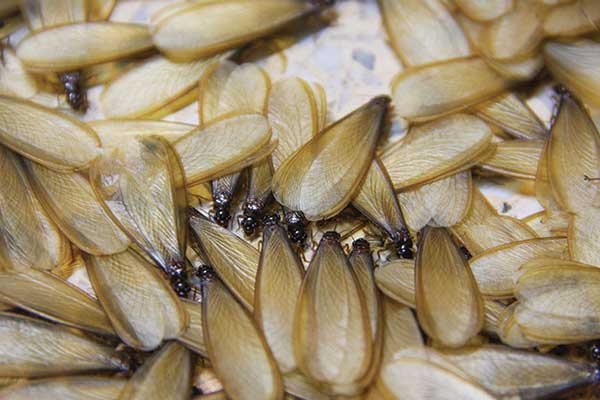The most important priority for determining if you have termites is to have a professional evaluation and inspection done. Your technician has extensive training and licensing in all areas of termite control to keep your home and business termite-free. Access to all areas of a home or building are necessary, especially basements, crawl spaces and utility rooms. Your technician uses a flashlight and their trained eye to spot termite tunneling, staining, galleries, damage and water intrusion. What may seem like nothing to the untrained eye may in fact be termite evidence or damage. Having protection for your home and business before termites attack is the best prevention. Technicians are able to recommend a treatment to an existing termite infestation and also help prevent them from swarming again later.
Termite damage repair services are available for damage caused by termites and other wood-destroying insects.
Termite damage repair services are available for damage caused by termites and other wood-destroying insects.
You should realize that all structures are susceptible to termites, even brick ones, and when it comes to termites, "out of sight" doesn't always mean "out of mind". Signs of a termite infestation are difficult to spot, and many termites tunnel hundreds of feet to reach a home or feeding site. In fact, termites can feed on your house without you knowing it, and can enter through an 1/8th inch crack. Valley’s thorough inspections determine where and how termites are getting in. Afterwards, a termite treatment plan is put into action, and if damage repair services are needed, Valley has you covered.
Termites can easily be confused with ants. Termites have six stubby legs, whereas ants have six long legs. Ants have a narrow waist compared to a termite. The wings on a termite measure twice as long as the body. The wings on the termite are all generally equal size and shape, whereas the back two wings on an ant are smaller than the front two. The majority of termites do not have any eyes (except for winged termites). The antennae on a termite can be best described as a string of pearls. The body of a termite is a soft body, whereas the body of an ant is more plated and harder.
Termites are surprisingly long-lived insects. Queen termites can live up to fifty years under ideal conditions. Workers and soldiers live approximately 1-2 years. Termite infestations can be difficult to identify before the insects have reached full maturity, and because a queen termite's life span is so long, populations left unchecked are capable of completely destroying infested structures. Buildings actually become unsafe and may collapse.






